Frieze Glass Works
Six standout pieces from London’s Frieze Art Fair 2011

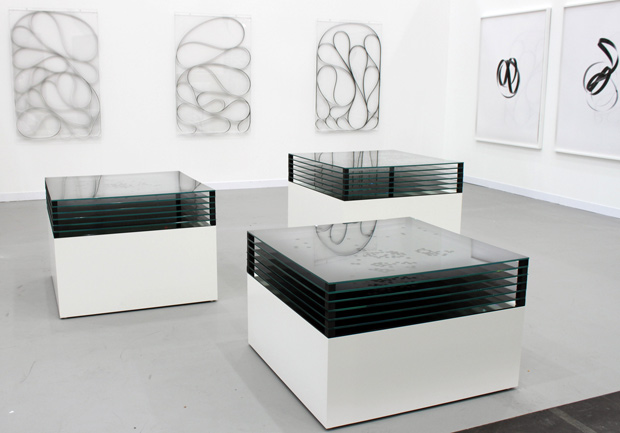
Now in its ninth year, the Frieze Art Fair has grown to encompass nearly 1,000 artists and 173 galleries from more than 33 countries under one hangar-like tent. Though organizers have been accused of creating an over-commercialized art supermarket, there is no doubt that Frieze still shows fascinating work.
This year we’ve picked six new glass pieces from a variety of galleries worldwide based on their striking angular elegance and transparent special effects. Part of what made these works so compelling was their ability to occupy their own space while also incorporating the people and art around them, reflecting all the fun of the fair.
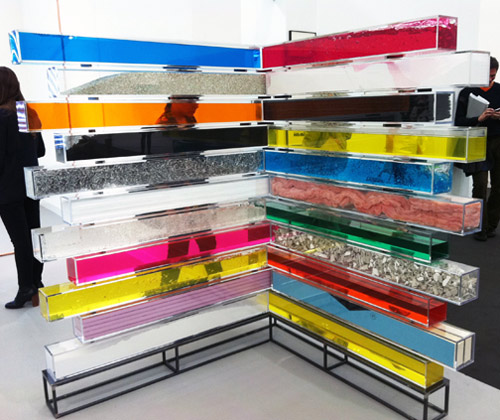
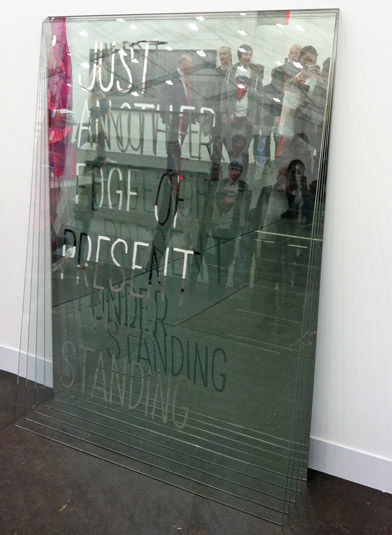
Brooklyn-based Nick van Woert caught our attention with his vibrant “Not Yet Titled 7” (2011) on show at the Parisian Yvon Lambert Gallery . These multi-colored building blocks cut a dash through the space, each filled with a different material. Insulation foam, chipped concrete and metal shavings are layered between colorful liquids and gels, all encapsulated in plexi-glass containers, as a sort of deconstructed expression of modern architecture.
Down the aisle at Plan B Gallery, Navid Nuur‘s “Untitled” (2011) is a simple structure of angled mirror and glass reflecting a combination of its fast-paced surroundings against the words “Just Another Edge of Present Understanding.” These complex visuals seem to reflect the multicultural layers of this Netherlands-based, Tehran-born artist showing work with a Romanian gallery.
Carsten Nicolai’s work at Galerie EIGEN + ART Berlin also incorporates layers of glass. In this case the three “Batterie Random Dot” (2011) sculptures reflect Nicolai’s own work on the walls rather than that of other artists. The dot patterns printed on the piled-up horizontal glass sheets contrast with the sculptures’ overall rectilinear cube structures, reinforcing Nicolai’s interest in the tension between random and organized patterns. “Many of my works underlie a rule and introduce a model as organizing scheme to recognize chaotic movements,” he explains.
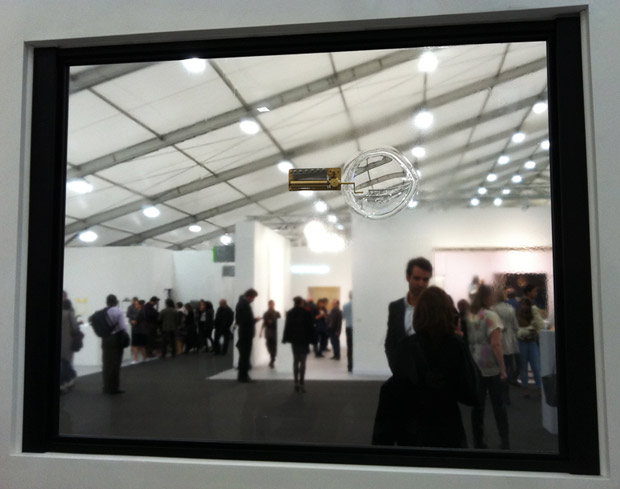
Anri Sala achieves full transparency with his installation “No Window No Cry”(2010). This Albanian artist provides a viewfinder both into the Marian Goodman Gallery and outward to the rest of the fair, creating moments where visitors come face-to-face on either side of the glass to admire this intriguing artwork. Trapped in between the viewers and the layers of glass in a carefully blown bubble is a “modified music box,” which one imagines could make a beautiful sound, if only it could be reached.
Olafur Eliasson expresses the containment of movement in a flash of bright yellow glass at the Tanya Bonakdar Gallery. Eliasson’s “Thinking Sphere” (2011) seems to develop last year’s “Untitled Sphere,” which reflected fragmented yellow light in a black box. Now the structure is reversed, with the light escaping into an external yellow sphere and the mirrored geodesic black box now containing a mysterious energy at its core.
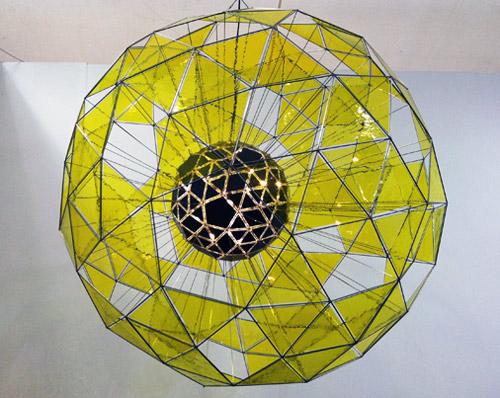
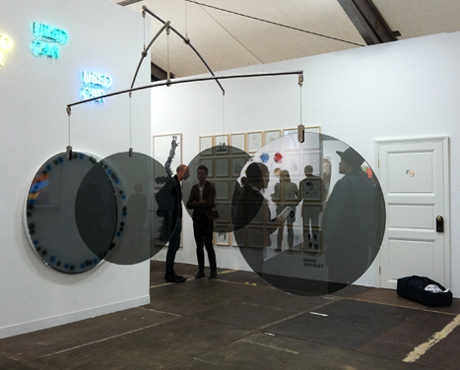
Jeppe Hein‘s, Two-way Mirror Mobile (2011) at Galleri Nicolai Wallner brought the theme of reflection and transparency to its rightful conclusion by the show’s exit, summing up the art world’s sense of watching and being watched. As this Danish artist’s large glass discs rotate on their Calder-like mobile structure visitors can see straight through them, while also seeing reflections of themselves and the surroundings artworks, capturing all of Frieze in a perfect circle.












